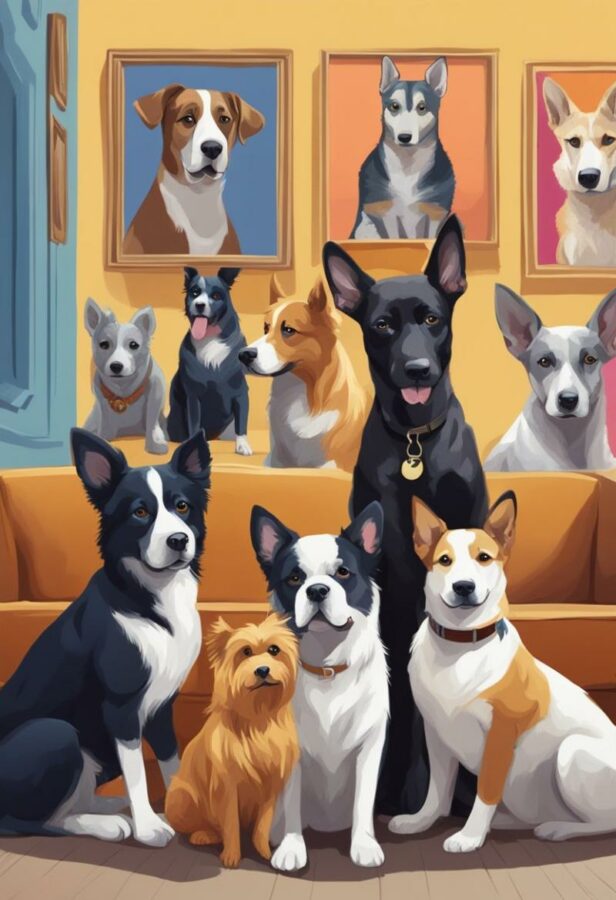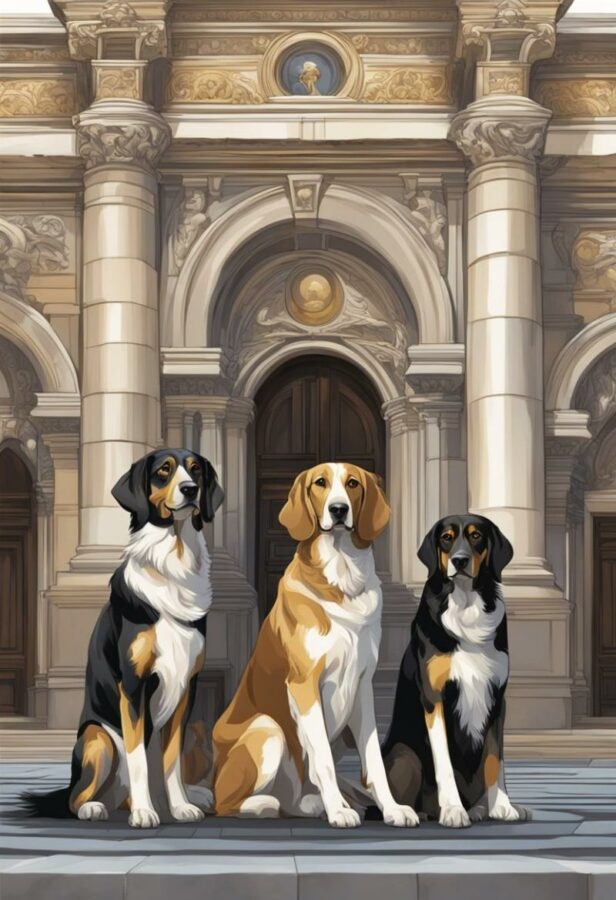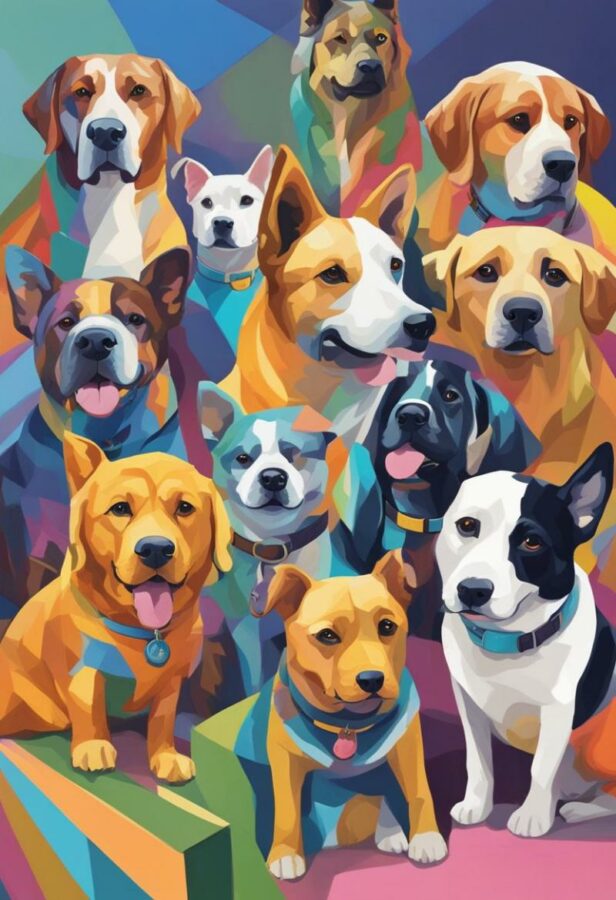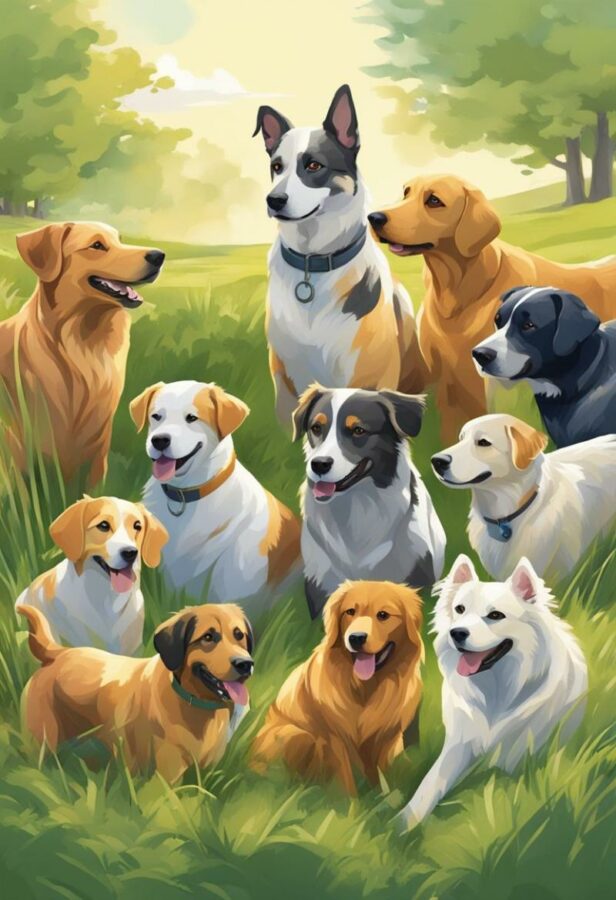The depiction of dogs in paintings is a rich tapestry that mirrors the evolution of the bond between humans and their canine companions. Throughout history, these animals have been immortalized on canvas, embodying the deep emotional connections that people have fostered with dogs. Artists have utilized various styles and techniques to capture the essence of dogs, ranging from realistic portrayals to more abstract interpretations. Not only do these works serve as artistic endeavors, but they also provide insight into the societal roles dogs have played, from loyal pets to symbols of power and guardianship.

Famous dog paintings often present more than mere representations; they unfold stories, capture moments of everyday life, or evoke symbolic meanings. The craftsmanship of artists like George Stubbs, Francisco Goya, and Édouard Manet reveals a commitment to exploring the character and soul of dogs in their natural environments. Whether immortalized in a regal stance or caught in a moment of spirited play, each brushstroke serves to highlight the unique personality of the subject.
These paintings are treasures not simply because of their aesthetic value but for their historical significance in documenting the evolution of the relationship between humans and dogs. They reflect the respect and admiration that various cultures hold for these animals. The works often employ a wide range of techniques, from the rigorous anatomical studies evident in the work of Stubbs to the more emotive, impressionistic flurries of Manet’s brush. Each painting tells a tale, identifying the standpoint of artists who, across centuries, have strived to capture the enduring presence of dogs in the human story.
The Historical Hounds

The legacy of dogs in art can be traced through various art movements, each capturing the essence of canine companionship and the cultural significance of these loyal creatures.
Renaissance
The Renaissance period heralded a deep appreciation for the natural world, with George Stubbs standing out as a master of animal portraiture. His work “A Couple of Foxhounds” is a prime example, showcasing his meticulous attention to anatomy and lighting. Stubbs’ depiction of the hounds exudes a sense of vitality and grace, embodying the Renaissance’s quest for lifelike representation.
Realism in Rover
Moving into the Realism era, artists like Sir Edwin Landseer became renowned for their ability to capture the personality of their subjects. Landseer’s piece “A Jack in Office” deftly portrays a Jack Russell Terrier asserting its dominance over larger dogs, a comical representation that displays Landseer’s knack for storytelling through animal subjects.
The loyalty and fidelity of canines are palpably presented in the works of Francisco Goya, especially in “Head of a Dog.” This painting from Goya’s Black Paintings series might appear minimal, but it’s charged with emotion. The dog seems to emerge from or perhaps recede into the vastness, a powerful depiction of isolation and perhaps faithfulness.
Across the Atlantic, Winslow Homer captures the rugged beauty of the Adirondack Mountains with his “Hunting Dogs in a Boat.” The painting exudes the essence of American Realism, detailing not only the dogs’ forms and textures but also their vital role in the American wilderness. The portrayal of the hounds, alert and ready, reflects their integral role in human lives as companions in both work and leisure.
Modern Art Mutts

The interplay of canines and art has evolved dramatically, with each artistic movement bestowing a unique lens through which man’s best friend is viewed and depicted.
Impressionist Pooches
In the Impressionist era, artists captured the fleeting moments of life with a focus on light and movement. Édouard Manet and Mary Cassatt were notable for their ability to portray the lively essence of dogs, their brushstrokes echoing the vivacity of a wagging tail. Cassatt’s “Little Girl in a Blue Armchair” subtly features the indolent gaze of a resting pup, juxtaposed with the carefree innocence of childhood.
Expressionist Dogs
Expressionism conveyed emotional experience rather than physical reality. Edvard Munch, famed for “The Scream,” often explored the themes of life, love, fear, death, and melancholy through his work, infrequently integrating dogs as symbols of these primal emotions.
The Still Life Pup
Moving from dynamic forms to static splendor, the Still Life genre captures dogs in moments of serene companionship. Francisco de Goya’s works occasionally depicted dogs, emanating an aura of tranquility and domesticity that resonated within the homely settings of the time.
Surreal Spot
Surrealism’s intent to unleash the creative potential of the unconscious mind often brought forth peculiar canine depictions. Dogs would frequently embody the surreal ethos, bending reality and presenting a dreamscape where the familiar form of a dog invites the viewer to a world of bizarre juxtapositions.
The Cubist Canine
Cubism dissected forms and reassembled them in abstracted ways. Dogs in Cubist art, such as those by Pablo Picasso, were not immune to this deconstruction. Picasso’s own dachshund, Lump, inspired numerous artworks, showcasing a fragmented yet identifiable form, challenging perceptions of the canine figure.
Abstract Tail Wags
Abstract art eschews the narrative in favor of the visceral and intuitive. Canine representations in this style might not always be immediately recognizable but they convey the essence and spirit of dogs through color, shape, and form. “Arearea” (by Paul Gauguin) with its joyous depiction of life in a Tahitian landscape includes dog figures blending naturally into the celebration, abstract yet harmoniously integrated.
See Related: The Purr-fect Pair: Celebrating Cats and Dogs Together
Canine Colors of Love

In the pantheon of dog painting artists, few evoke the playful spirit and beloved imagery as Cassius Marcellus Coolidge, with his “Dogs Playing Poker” series. Particularly, “A Friend in Need” displays not only a keen sense of humor but also a deft reflection of human emotion and social interaction. The piece portrays pooches engrossed in a clandestine game of poker, where one dog stealthily passes an ace under the table to his comrade—a testament to loyalty and camaraderie clothed in artistic whimsy.
The “Dogs Playing Poker” series initiated a movement in popular culture that brought the domesticity of the canine world to the ornate frame of fine art. Coolidge’s anthropomorphic portrayal transforms the mundane act of playing cards into a vivid narrative, rendered more complex through the rich interplay of colors and expressions.
Dog Painting Artists | Notable Work | Characteristic |
|---|---|---|
Cassius Marcellus Coolidge | Dogs Playing Poker | Satirical Anthropomorphism |
Edwin Landseer | Suspense | Emotional Realism |
In contrast stands Sir Edwin Landseer’s “Suspense,” which veers towards the poignant depiction of a puppy awaiting its master’s return. The forlorn eyes of the dog, possibly a dachshund, are portrayed with a realism that conveys an intense emotional depth. Landseer famously captured a spectrum of feelings in his works—from the regal majesty of “Jack in Office” to the innocence and vulnerability in “Suspense,” all the while utilizing refined brushwork to highlight fur textures and gaze.
These artists use their palette to reveal the bonds between dogs and their human counterparts. Whether it’s through the vividness of a poker game or the silent yearning for companionship, each canvas underlines the unwavering love manifested in the lives of canines. Their works immortalize the soulful interaction with our furry friends, paying homage to their role as guardians of emotion, caught in a stroke of brush and color.